Learn-Along Guide
Grade Levels
4-8
Subjects
Language Arts, Science, Social Studies, Health, Art, Media Literacy
Grade Levels
4-8
Subjects
Language Arts, Science, Social Studies, Health, Art, Media Literacy
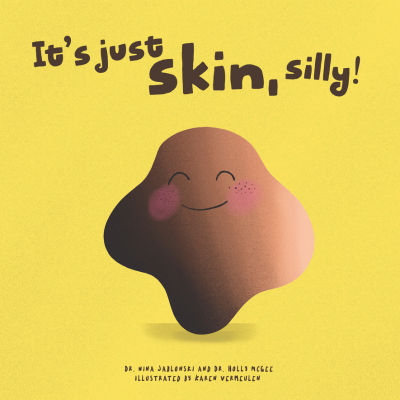
Our show features the book It’s Just Skin, Silly!
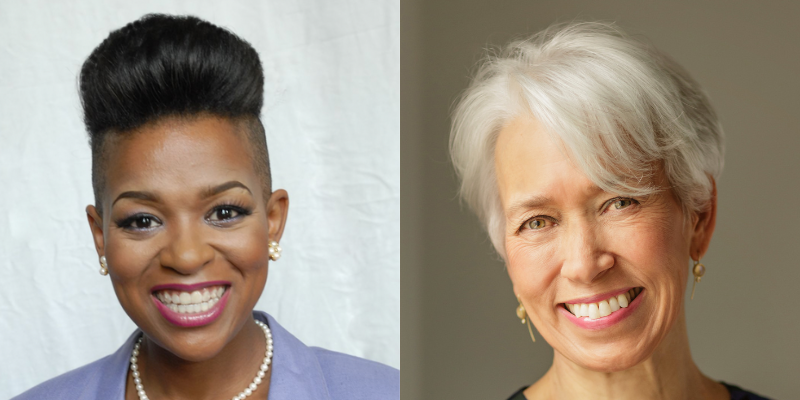
Dr. Holly Y. McGee and Dr. Nina Jablonski
On this episode, we learn about the largest organ of our body-our skin! We learn about skin from the perspective of human history and culture from anthropologist Dr. Nina Jablonski and historian Dr. Holly Y. McGee and we also learn about the science of skin from pediatric dermatologist (children’s skin doctor), Dr. Adnan Mir.
We learn all about the story of our skin, how it makes us the same, some origins of discrimination based on skin color, and how the next generation can bring about positive change. We learn about our skin’s layers, as well as important ways to take care of our skin. Complete the activities below to challenge what you know and learn more!
Structural Racism
The unfair treatment of some people that is built into systems of society throughout history. It affects people in areas of healthcare, housing, financial opportunities and more.
Legacy
Something that is passed on from previous generations such as ideas and beliefs.
Vocabulary
Vocabulary words can be found throughout the page in bold.
Melanin
Melanin is a substance in your body that produces hair, eye, and skin pigmentation (or coloring). The more melanin you produce, the darker your features are. The amount of melanin in your body depends on your genes and how much sun exposure your ancestors experienced based on where they lived.
Epidermis
The epidermis is the top layer of skin. It has many functions including protecting the rest of our body from germs and harsh elements, producing new skin cells, and determining skin color.
Discrimination
The unfair treatment of people based on things such as their age, gender, skin color, etc. It has real and lasting negative effects on peoples lives.
The Skin We’re In Is So Alike
In our show we heard each of our guests confirm that human skin is so much more alike than it is different. Dr.’s Jablonski and Mcgee explain that all human’s skin is 98-99% the same.The only thing that differs between people is the amount of melanin that skin has.
Melanin is a substance in your body that produces hair, eye, and skin pigmentation (or coloring). The more melanin you produce, the darker your features are. The amount of melanin in your body depends on your genes and how much sun exposure your ancestors experienced based on where they lived and the intensity of the sunlight in that place. Melanin allows us to absorb Vitamin D, which comes from ultraviolet radiation from the sun, which we need to help keep us healthy.
Of course, people move from one place to another for many reasons and have for hundreds of years. Over generations, as people moved, for example, to a place where sun is weaker, the radiation became weaker also, so they would lose melanin or pigment over time in order to accurately absorb Vitamin D. This is how different people end up with different skin colors, it’s all based on how much sun your ancestors were traditionally exposed to.
Dr. Mir agrees as he explains that everyones skin is the same beside the amount of melanin in it, under a microscope its all the same. This episode helps us learn that so much unnecessary meaning put into skin color. Our skin may have things that make us unique, such as its color, our birthmarks or freckles, but any differences in our skin are not bad things, just things that make us diverse, or different in variety. It’s important to understand that our skin is all the same in essence, any minor differences such as skin color should be celebrated, appreciated, and loved.
Question Challenge:
What do you wonder about skin?
On our show we heard great questions to our guests from the kids crew such as: “Why do people judge others based on skin?” and “How do we know if our skin is healthy?” Think of two or more questions that you have about skin and research some possible answers.
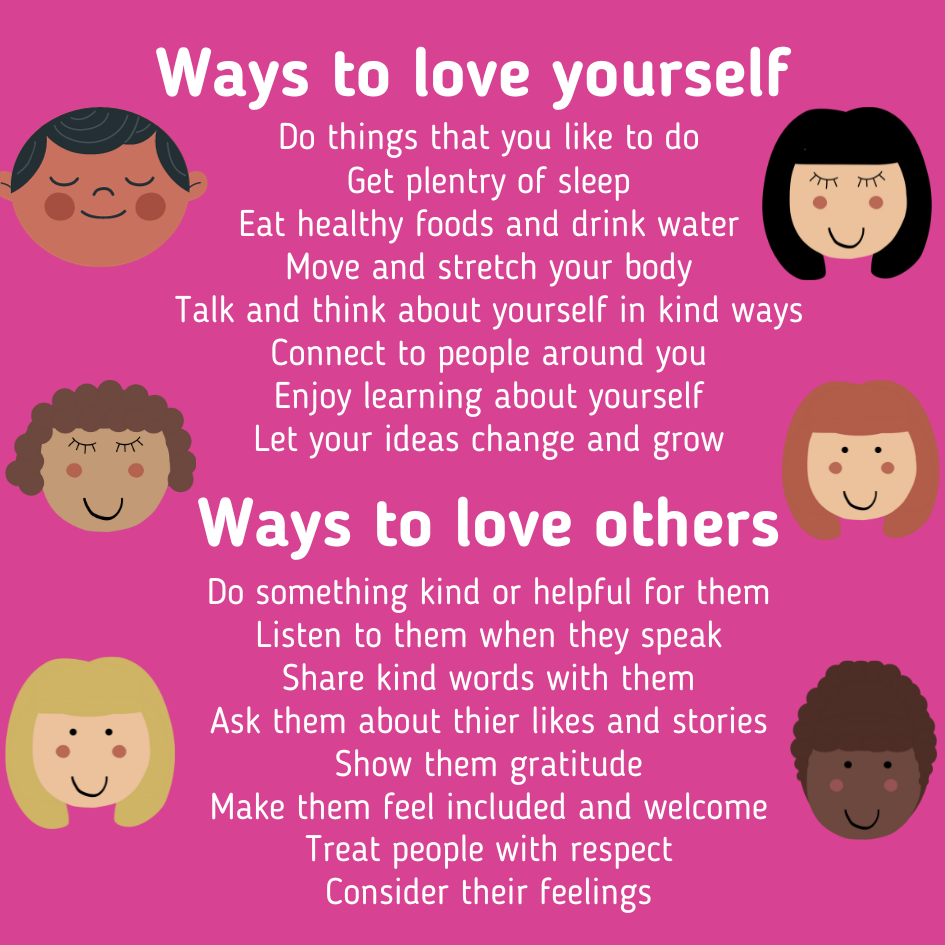
To love the skin we’re in, its important we show love to ourselves and others. Infographic made with canva.
History of Discrimination Based on Skin Color
As we heard from our Kids Crew, thinking about skin brings up questions about discrimination. Discrimination is the unfair treatment of people based on things such as their age, gender, skin color, etc. Discrimination based on skin color is also known as racism. It has real and lasting negative effects on peoples lives.
Even though non-white people of Indigenous, African, Asian, Latin American descent who have brown, black, tan, red, and yellow skin tones make up more than 85% of all people in the world, (known as the global majority), discrimination against them is still strong. Many of these ideas are rooted in colonization, for example when Europeans came to the United States, they learned that people already inhabited the lands, (they are now known as indigenous peoples). These peoples were very different from the white Europeans in that they had different colored skin, beliefs, cultures and practices. Now a days we know that they had different skin because of the pigment of their melanin due to their geographical location, but Europeans made claims that indigenous peoples and dark skinned africans were inferior because of their skin color, this helped excuse their actions of taking over land, eliminating indigenous peoples, and making people become slaves through violent ways.
This type of discrimination resulted in non-white people to have less opportunities, and to suffer more. It’s been about 500 years since the colonization of North America, and although there have been major advances in giving equal rights, thanks to those who supported the Civil Rights Movement, there are still major differences in the quality of life for non-white people. The Children’s Hour, along with our guests believe that the next generation of youth will work to make our world a more equal and fair place. An important part of doing that is to celebrate and respect peoples differences. Try this activity to learn more about yourself and others.
Activity: Pen Pal Letter
Make a new pen pal, or a friend who you write letters to, who is from another part of the world! With the permission and help of a parent/guardian, sign up to be matched with a new friend through Kids for Peace. Brainstorm what you would like to write about in the first letter you send them. You can tell them about you, your family, your interests, your culture and what it is like where you live, and ask them questions. Use this template to help you.
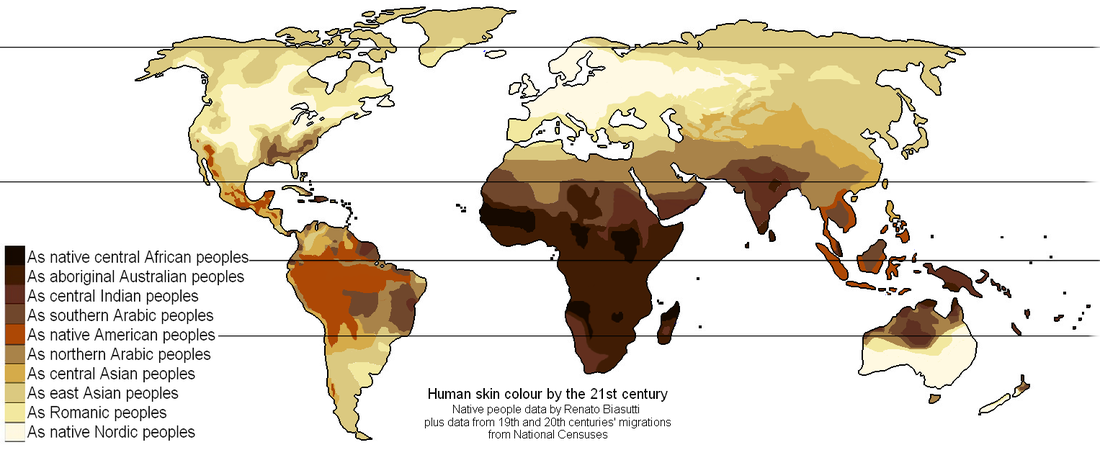
Native or Indigenous skin color variations based on location. You may have the skin color of your native ancestors based on where they are from. Today, people move around all over the world and make diverse communities. Image source
Anti-Racism
We heard Dr. Mcgee explain that she believes people treat others unfairly because they feel badly about themselves, to feel better about themselves, they make others feel worse. She also points out that ideas about people based on skin color is a legacy, or ideas that are passed down from previous generations. It is a legacy that is maintained through structural racism, the unfair treatment of some people that is built into systems of society throughout history. Ideas that people of darker skin color are inferior are built into society through laws, policies, writings, movies, schools, neighborhoods and more. It affects people in every aspect of their lives. Like receiving healthcare, housing, economic and job opportunities. The reason these ideas have stuck around is because the unfair treatment of people based on skin color benefits people who already have more power and priveleges.
However, as our guests point out, we are at a moment in history where it’s a perfect time to work towards ending racial discrimination. The current generation of children are ready for a fair and just society. Youth have been playing important roles in recent social movements fighting for issues from gun control, to equality, and climate. They are also finding ways to enact Anti-Racism, or the practice of opposing or being against racism by actively promoting a fair and just society. Here are some ways that you can be anti-racist.
–Learn about other cultures– read books and watch documentaries about other cultures. Find a calendar of community events through your local newspaper, libraries, churches, or community centers and attend events that are different from what you have done before.
-Be a friend- be kind and include everyone, think about expanding your friend group and invite other kids to play or work with you at school or at home.
-Watch and listen to diverse media- Find movies, shows, videos and music to enjoy that represent diverse people, places, and cultures.
-Speak up- when you see or hear someone being treated unfairly, stand up for the person being mistreated and tell a trusted adult.
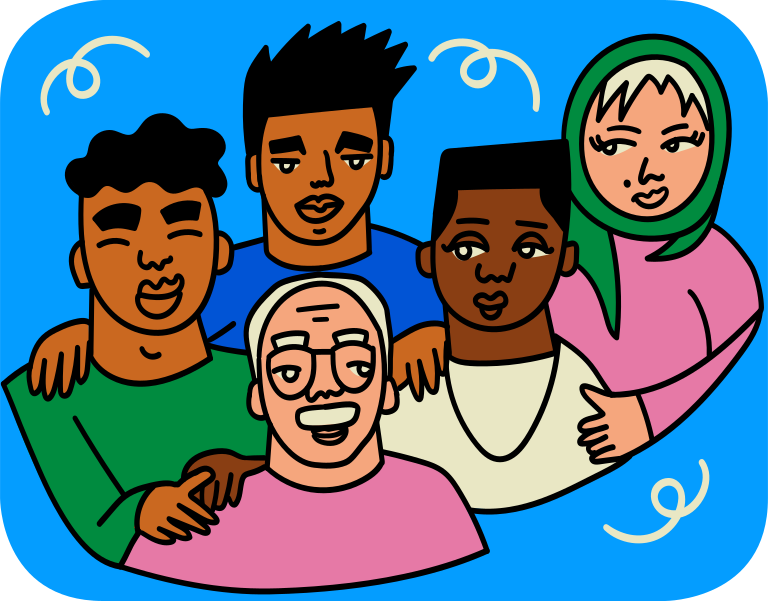
Image source
Activity: Be an anti-racist advocate
An advocate is someone who openly supports a cause. Think about a time that you saw or experienced discrimination. Write a letter to someone who holds power over the decisions that affect you and your community about what happened and what do you think could or should be done about it. You could write to a school principal or board of education member, a local elected official, or even the leader of your country. Here is a resource to help you.
The Layers of Our Skin
On our show we learned a lot from Dr. Adnan Mir, a pediatric dermatologist who joined us to talk about skin. He explained that skin is made up of different layers. The epidermis is the top layer of our skin. It has many functions including protecting the rest of our body from germs and harsh elements, producing new skin cells, and determining skin color.
The dermis is the middle layer, it holds sweat glands, nerves, blood vessels, produces hair and nails, and supplies blood to keep skin healthy. The bottom layer is known as the hypodermis, or the fatty tissue layer, it provides cushioning for muscles and bones, and helps control the body’s temperature.
The layers of our skin work together to build a barrier, to help us control our temperature and sweat so we dont over heat, to absorb the right amount of sun rays to create vitamin D, and so much more. Our skin even works constantly to regenerate itself, every few weeks we shed our skin and regenerate new skin cells.
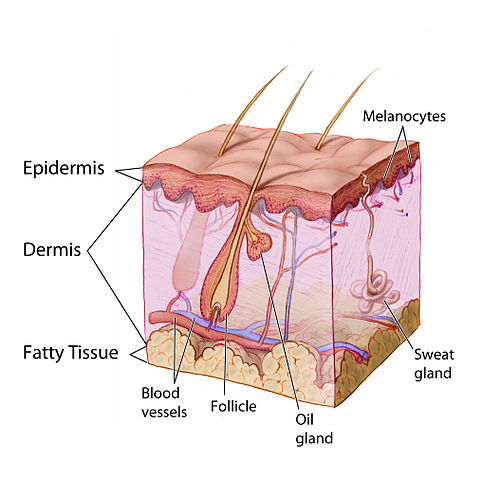
The layers of our skin each have an important purpose. Image source
Activity: Layers of our skin
Complete the layers of our skin activity to identify the layers and other parts of our skin, summarize what you learn, and be creative as you think about an alternative to skin!
Taking Care of Our Skin
Dr. Mir answered some questions that also helped us learn how to keep our skin healthy. He explained that over time, proteins that hold skin together like collagen, elastic tissue, get lost after too much sun exposure and with age.
It is important to keep in mind the amount of exposure to the sun that we get. He explained that since people from all over have moved all over, we are likely exposed to more or less sunlight than what our melanin is prepared to handle. This is why it is very important to wear sunscreen.
The use of sunscreen starting when youre young can prevent cancer, painful sunburn, and wrinkles. He reminds us that it’s never too late to start wearing sunscreen.
Another question he answered ways about ways to prevent pimples. It helps to wash your face everyday with gentle soap, and people can also treat and prevent sever pimples, or ance, with special soaps and medications prescribed by a dermatologist like Dr. Mir.
Despite all the conditions your skin can get, freckles, sun spots, bug bites, albinism, birthmarks, and getting wrinkles with age, our skin is still an incredible organ that our body needs to survive, so its important to love the skin you’re in by taking care of it!
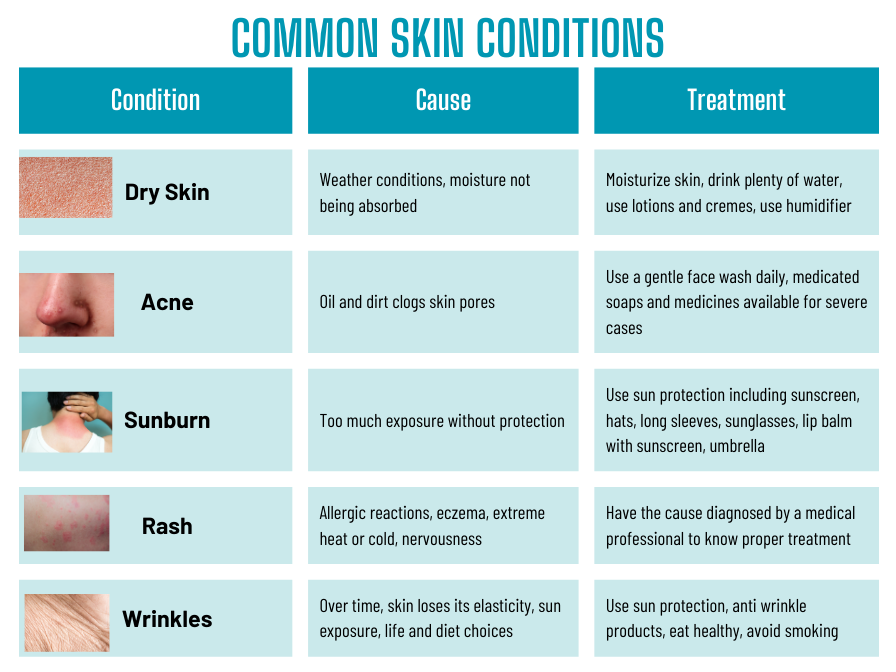
Our skin can go through a lot of different conditions, check out these causes and ideas for treatment. Infographic made with canva.
Activity: Teach others to keep skin healthy
Think of a way to care for your skin, that could help prevent or treat some common skin conditions. Make a poster to help teach others about what they can do. Hang up the poster at a school, local library, or community bulletin board.
Media Journal: The Skin We're In
After watching one or both of the videos, use the guiding questions to reflect on what you learned. Share your information with another person.
What did I already know about this topic?
What did I learn from the video?
What new questions or wonders do I have?
More Activities and Resources
Watch this video about how we get our skin color narrated by Dr. Jablonski
Check out this list of lessons, articles and additional resrouces on teaching about white supremacy and systemic racism.
Read these tips on how to discuss racism with children from PBS Education
Check out resources and handouts on how to address structural racism with children from Embrace Race
Bill Nye explains the science of skin color in one minute
See a video for young adolescents on how to fight racism in schools
Understanding structural racism lesson activity
Informative handouts about pediatric skin conditions
Tips on how to keep your skin safe for kids
Science lesson Integumentary System: All About Our Skin
Its Just Skin, Silly! Publishers information and activity sheet
See these book lists for other books that support teaching children about racism


